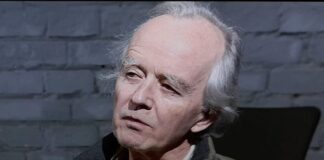Looking at new work in the visual arts in the late 1960s, art critic Jack Burnham suggested in an influential essay that advanced artworks of the time could be understood as embodying an aesthetic based on the emulation or representation of systems. Although Burnham’s essay is a product of its time—it makes, among other things, a case against Greenbergian formalism, vestiges of which were still of some importance then to critical thought—it remains useful for suggesting some of the essential characteristics of an aesthetics drawing on the properties and behaviors of systems. And while it’s no longer obvious that some of the Minimalist and early Conceptualist work he described as examples of the systems aesthetic were in fact systemic in any rigorous sense, it’s also true that the systems aesthetic is important and flourishing—albeit in a form appropriate to our own time and technologies—in contemporary sound art.
 Eno’s example was inspiring to subsequent generations of electronic music and sound art experimentalists, much of whose work is readily accessible from the web. Of particular interest are two netlabels specializing, through design or circumstance, in sound art informed by a systems aesthetic. Both labels—Treetrunk and Vuzh—release work embodying diverse approaches to systems-organized sound.
Eno’s example was inspiring to subsequent generations of electronic music and sound art experimentalists, much of whose work is readily accessible from the web. Of particular interest are two netlabels specializing, through design or circumstance, in sound art informed by a systems aesthetic. Both labels—Treetrunk and Vuzh—release work embodying diverse approaches to systems-organized sound. Treetrunk’s first release was Park’s Music for Infants, an hour-long set of ten connected, quasi-fractal pieces—sounding much like notes picked out on a marimba or prepared piano–generated with the QMuse program. There soon followed a series of Fractal Diners, compilations of tracks by various artists using fractal and other generative methods and programs. Other Treetrunk releases demonstrate the diversity of results to be had from generative processes. Generative Themes by ambient musician Tange (Gordon MacMillan) is a suite-like work over the course of which the underlying thematic material is set out in short, overlapping phrases moving slowly in superimposed planes of sound. At the other end of the spectrum from Tange’s mellifluous soundscapes is Dmitriy Krotevich’s Codebusters, a harsh noise work generated from machine code.
Treetrunk’s first release was Park’s Music for Infants, an hour-long set of ten connected, quasi-fractal pieces—sounding much like notes picked out on a marimba or prepared piano–generated with the QMuse program. There soon followed a series of Fractal Diners, compilations of tracks by various artists using fractal and other generative methods and programs. Other Treetrunk releases demonstrate the diversity of results to be had from generative processes. Generative Themes by ambient musician Tange (Gordon MacMillan) is a suite-like work over the course of which the underlying thematic material is set out in short, overlapping phrases moving slowly in superimposed planes of sound. At the other end of the spectrum from Tange’s mellifluous soundscapes is Dmitriy Krotevich’s Codebusters, a harsh noise work generated from machine code. Like Treetrunk, Vuzh is a label dedicated to offering gratis downloads of challenging music. Vuzh is run by C. Reider, a sound artist based in Colorado in the western US. Reider was drawn to sound experimentation after having read Michael Nyman’s book on experimental music while still in high school. At about the same time, he became acquainted with Eno’s music through Eric Tamm’s Brian Eno: His Music and The Vertical Colour of Sound—although he hadn’t yet heard any of it. As embodied in his releases on Vuzh and elsewhere, his work uses a systems-based process that he describes as “reduction,” which he likens to Robert Rauschenberg’s “Erased De Kooning.” Reduction starts with a sound or set of sounds and then runs it through a series of iterative noise filtering operations in Amadeus Pro. As with “Erased De Kooning,” the end result isn’t completely empty but instead contains traces of the source material.
Like Treetrunk, Vuzh is a label dedicated to offering gratis downloads of challenging music. Vuzh is run by C. Reider, a sound artist based in Colorado in the western US. Reider was drawn to sound experimentation after having read Michael Nyman’s book on experimental music while still in high school. At about the same time, he became acquainted with Eno’s music through Eric Tamm’s Brian Eno: His Music and The Vertical Colour of Sound—although he hadn’t yet heard any of it. As embodied in his releases on Vuzh and elsewhere, his work uses a systems-based process that he describes as “reduction,” which he likens to Robert Rauschenberg’s “Erased De Kooning.” Reduction starts with a sound or set of sounds and then runs it through a series of iterative noise filtering operations in Amadeus Pro. As with “Erased De Kooning,” the end result isn’t completely empty but instead contains traces of the source material.A good example of Reider’s process can be found in 2008’s Inconstant, a recursive noise-filtering work released on Treetrunk. For Inconstant, the input material Reider chose was made up of twelve drones taken from the Constant series, a set of minimal/ambient works by different artists which had been released on various netlabels. Reider took each drone as an input in a system of serial noise reduction, wherein each drone in the series supplied the noise profile to be reduced from the drone preceding it. Through an iterative process of sound erasure, Reider, in his own words, “filtered as much of the drone out of [each drone] as possible.” Buddha Reduction, released on Vuzh, applied a similar reductive process to samples of the Buddha Machine and Buddha Machine 2.
Other Vuzh artists have composed systems works using different types of processes. On RIM, Caroline Park takes simple inputs—on the first track, a brief sample of a viola, on the other track several pitch sets produced by sine wave oscillators—and puts them through Max/MSP for recursive processing with delay feedback loops or other combinatorial operations. The outputs are complex, multilayered accumulations of sound that are notable for their sensuous surfaces, emergent harmonies, and fluctuating dynamics. MiquelParera’s MUME Selections release contains four pieces taken from hi participation in the June 2013 Music Metacreation Weekend, an international workshop at the University of Sydney’s Design Lab for artists working with music generating computer programs. The tracks were created by the software neix_2013a, which takes random selections from algorithmic sound generators and processes them into relatively short compositions.
 On the evidence of this music—which is just a small sample of contemporary systems-derived sound art—the systems aesthetic is thriving. Interestingly, some of the antinomies Burnham thought were salient at the time of his essay appear to have been resolved by these and other artists, largely by virtue of their no longer being perceived as mutually exclusive in principle or as incompatible in practice. On the contrary, these works and others like them seem content to be processes and objects simultaneously; seem comfortable being artworks made of raw materials drawn from mathematics or other extra-artistic domains; and find no contradiction in being formed of intellect and imagination in equal measure. Beyond this, they demonstrate that constrained inputs and specified operations are capable of producing aesthetically valid formal structures—and indeed, that the underlying systems are interesting from a formal point of view in and of themselves.
On the evidence of this music—which is just a small sample of contemporary systems-derived sound art—the systems aesthetic is thriving. Interestingly, some of the antinomies Burnham thought were salient at the time of his essay appear to have been resolved by these and other artists, largely by virtue of their no longer being perceived as mutually exclusive in principle or as incompatible in practice. On the contrary, these works and others like them seem content to be processes and objects simultaneously; seem comfortable being artworks made of raw materials drawn from mathematics or other extra-artistic domains; and find no contradiction in being formed of intellect and imagination in equal measure. Beyond this, they demonstrate that constrained inputs and specified operations are capable of producing aesthetically valid formal structures—and indeed, that the underlying systems are interesting from a formal point of view in and of themselves.






